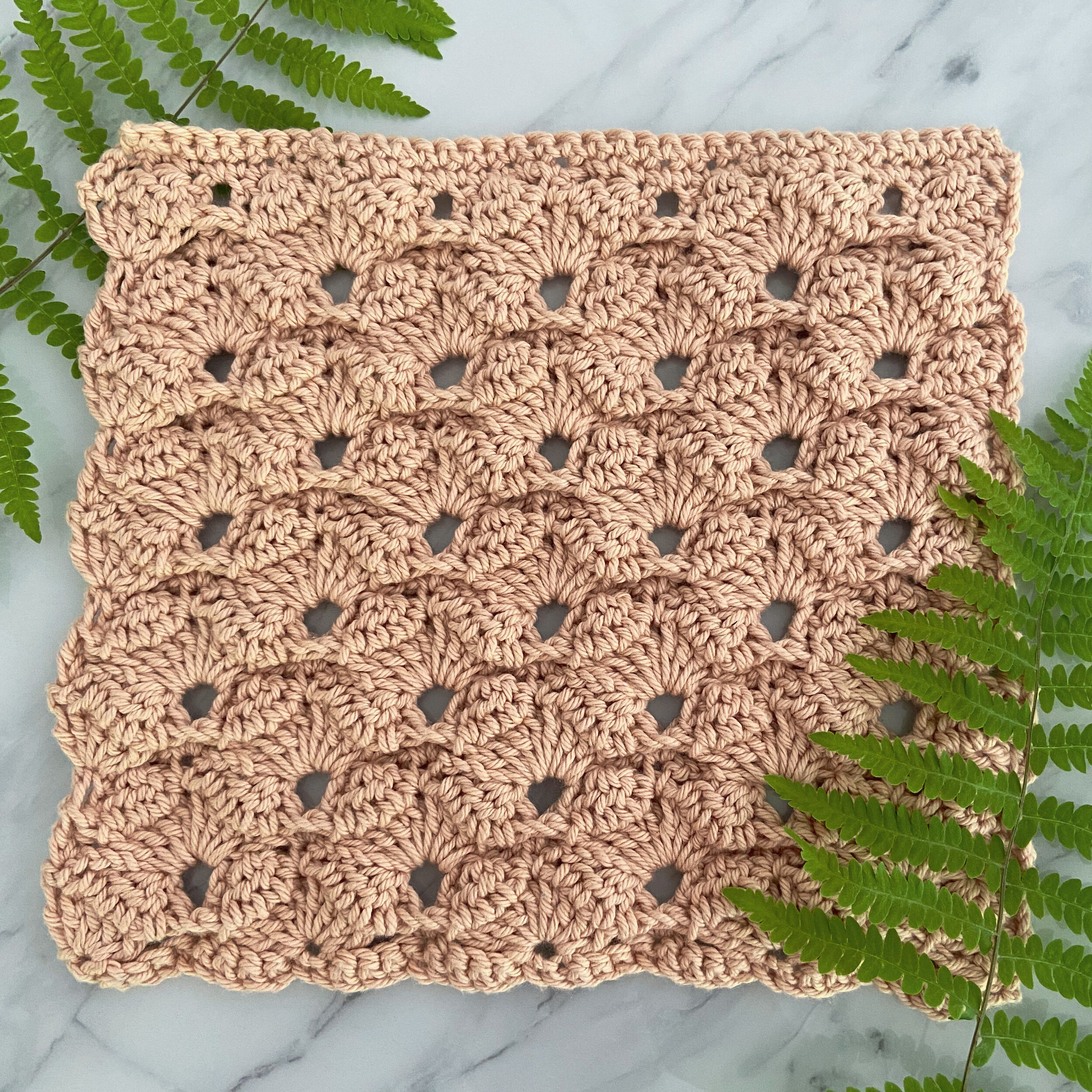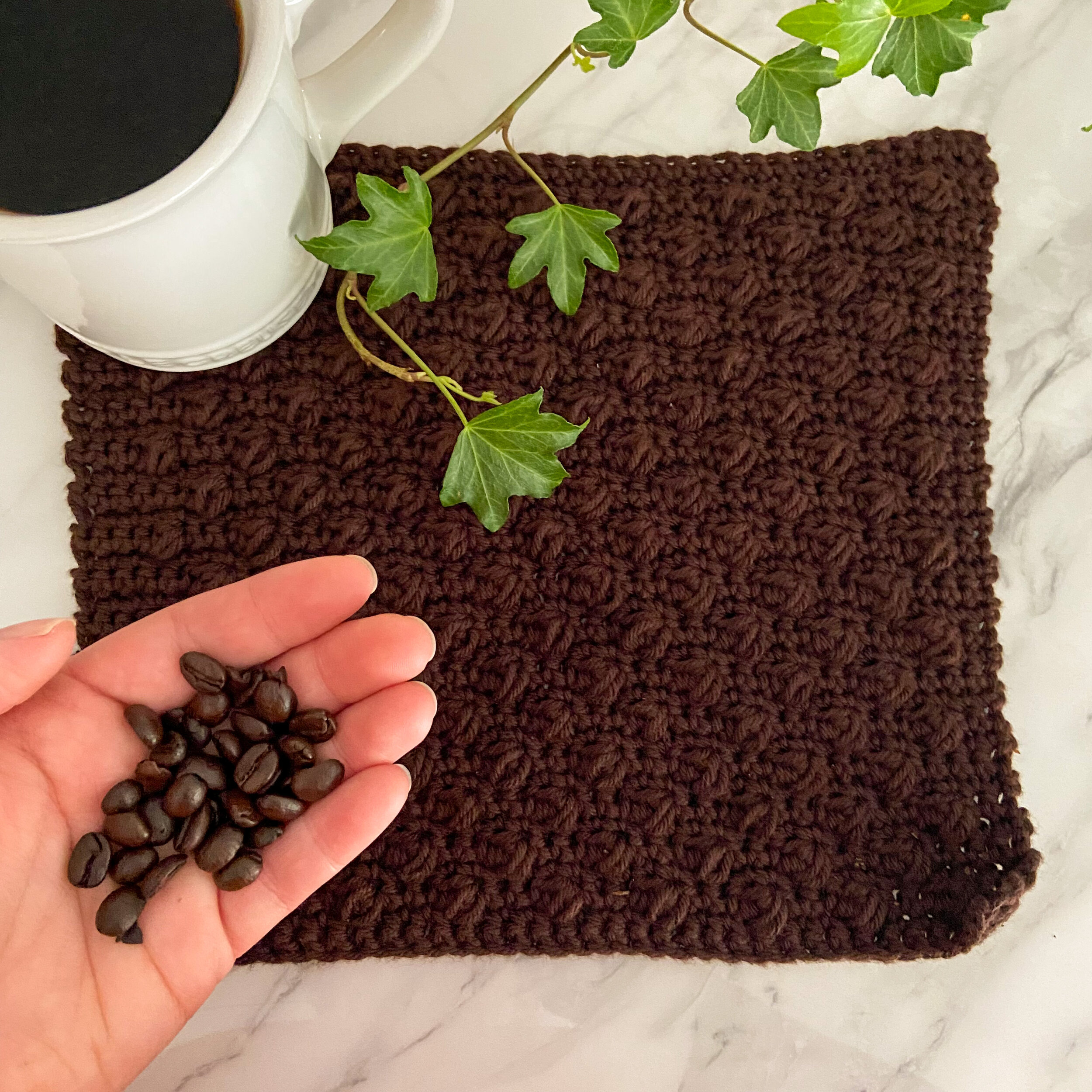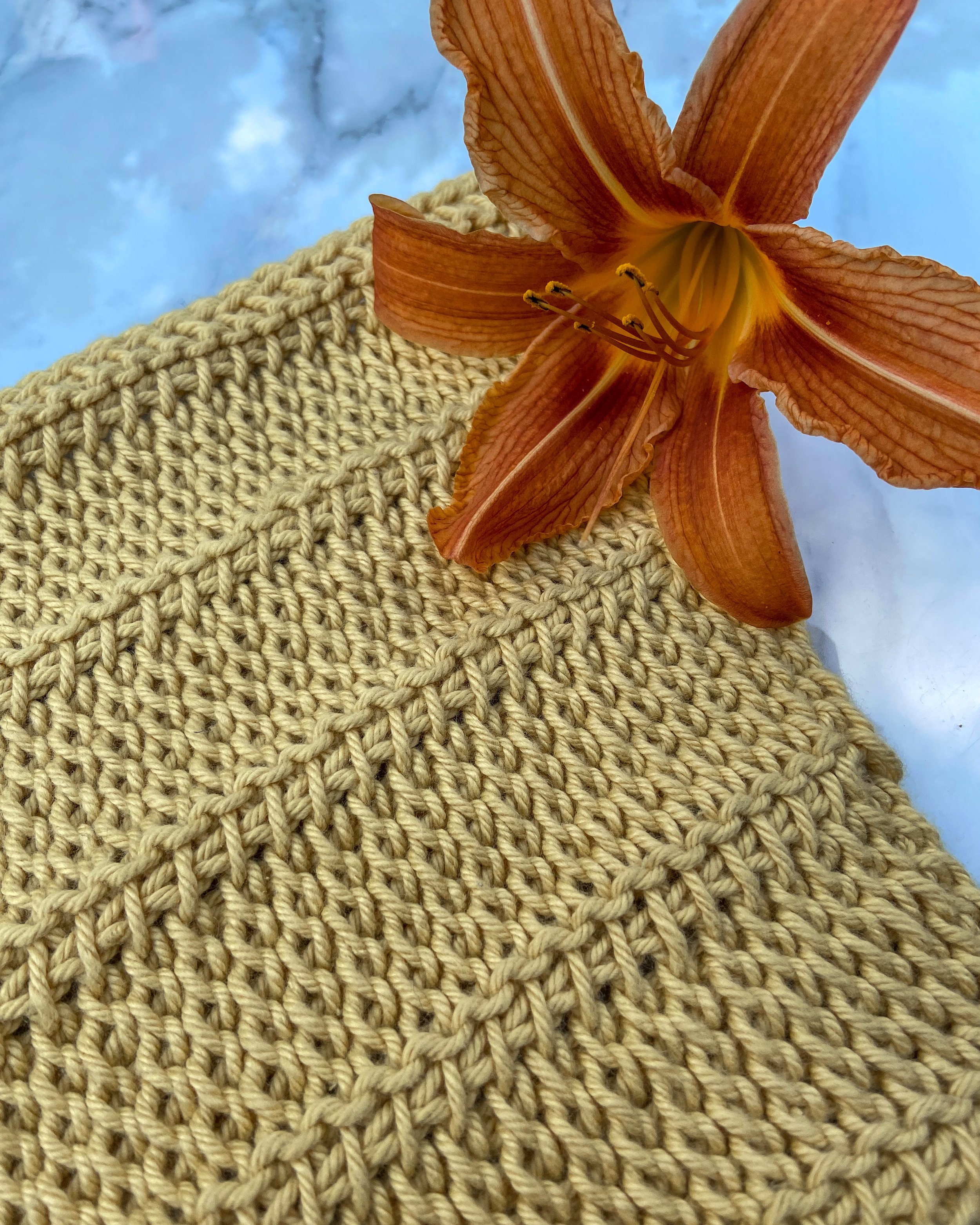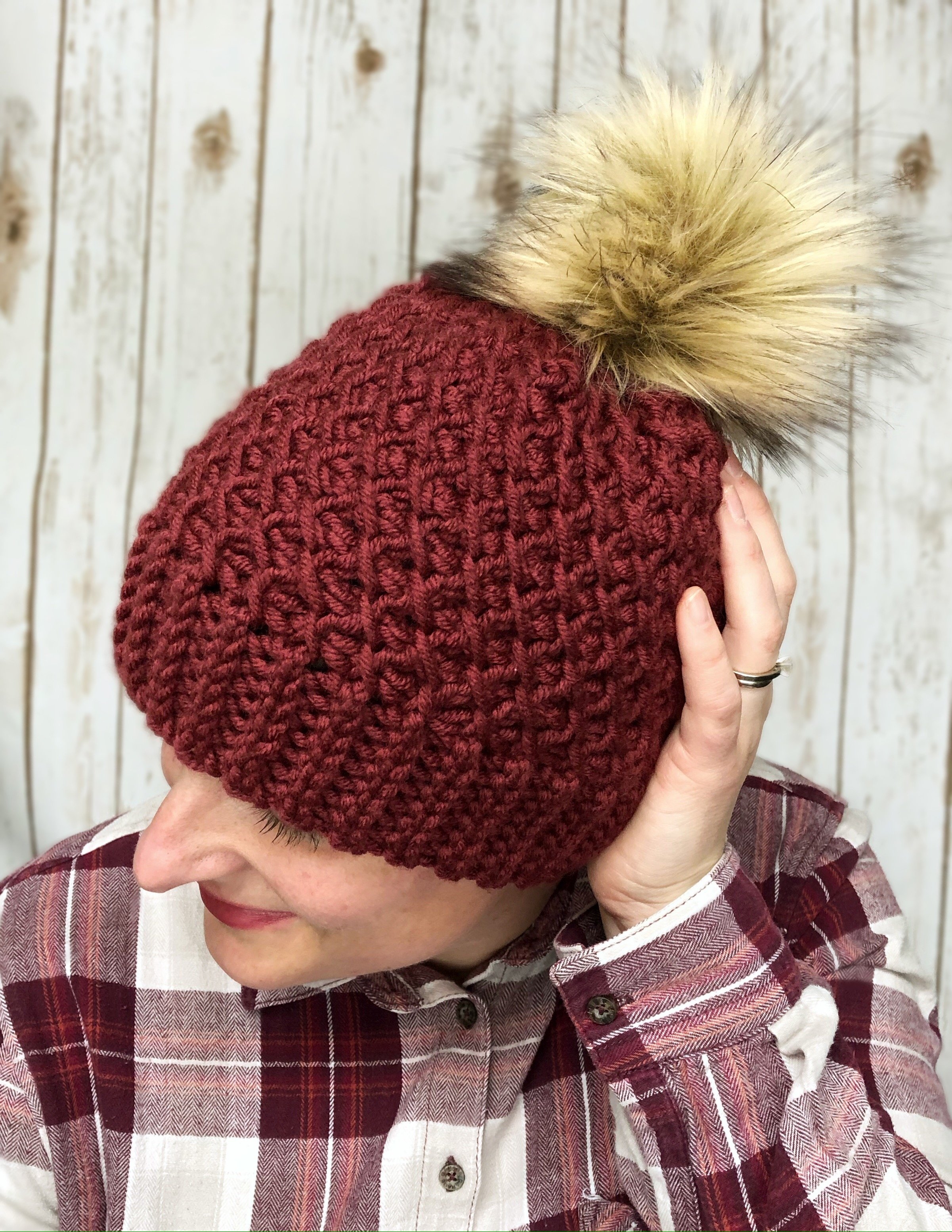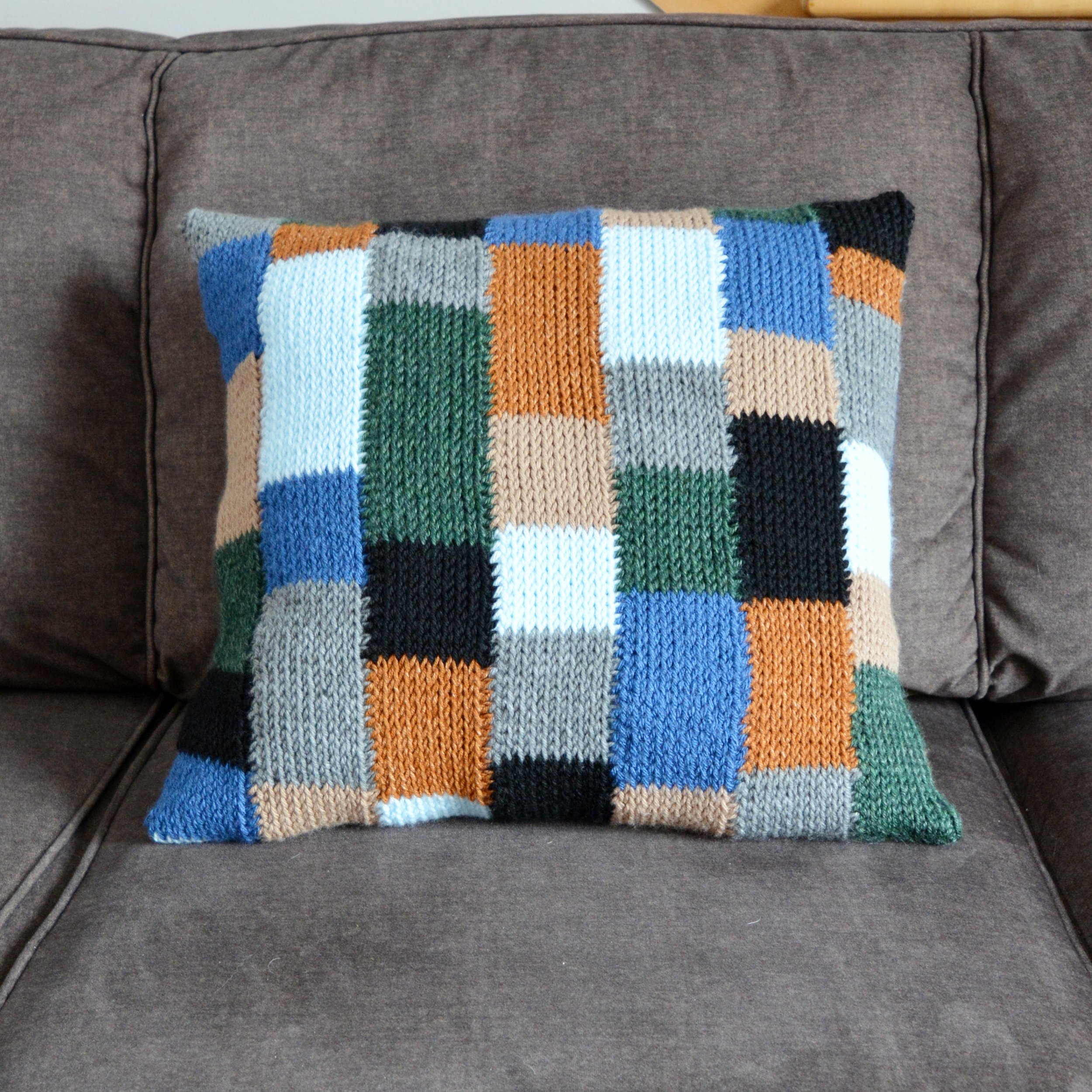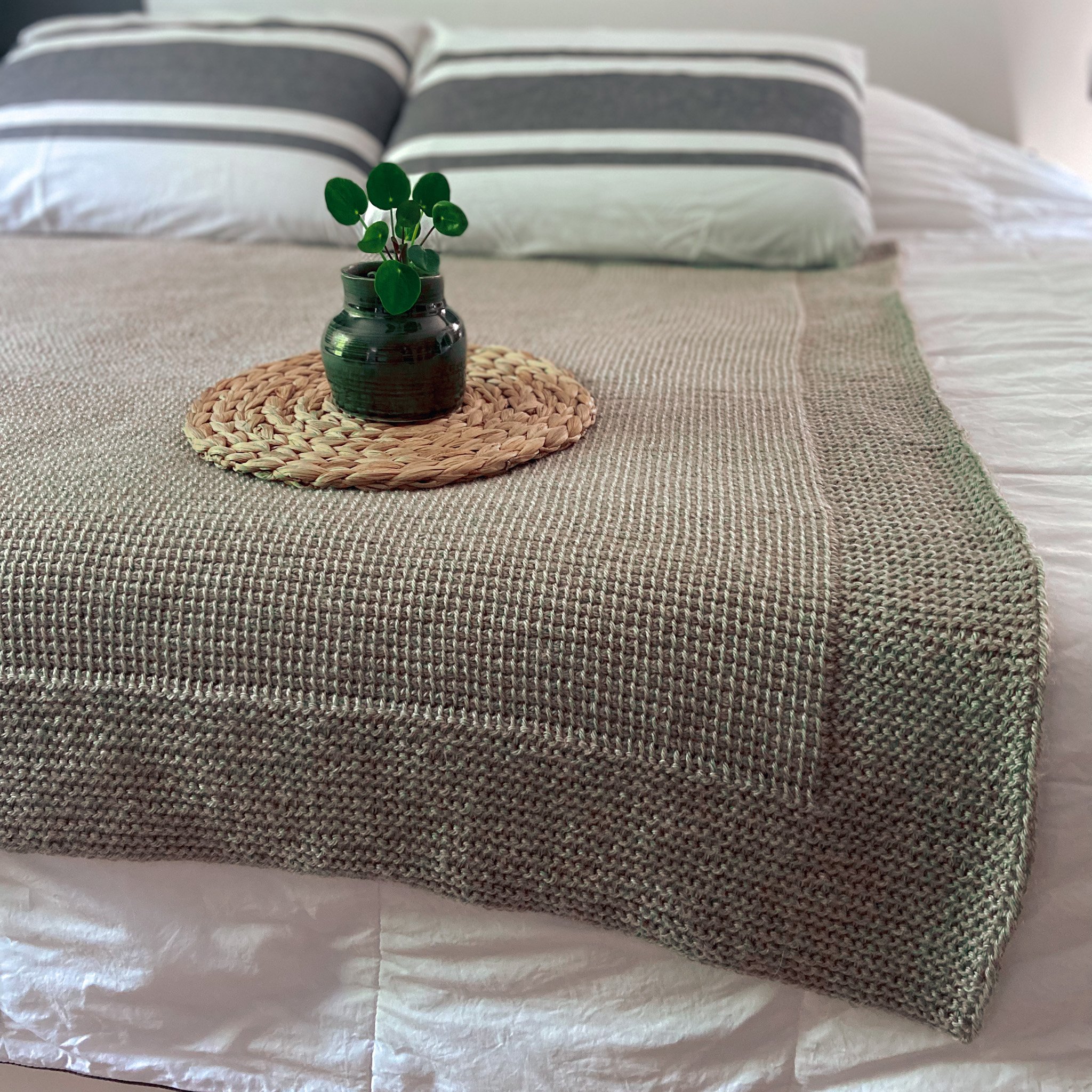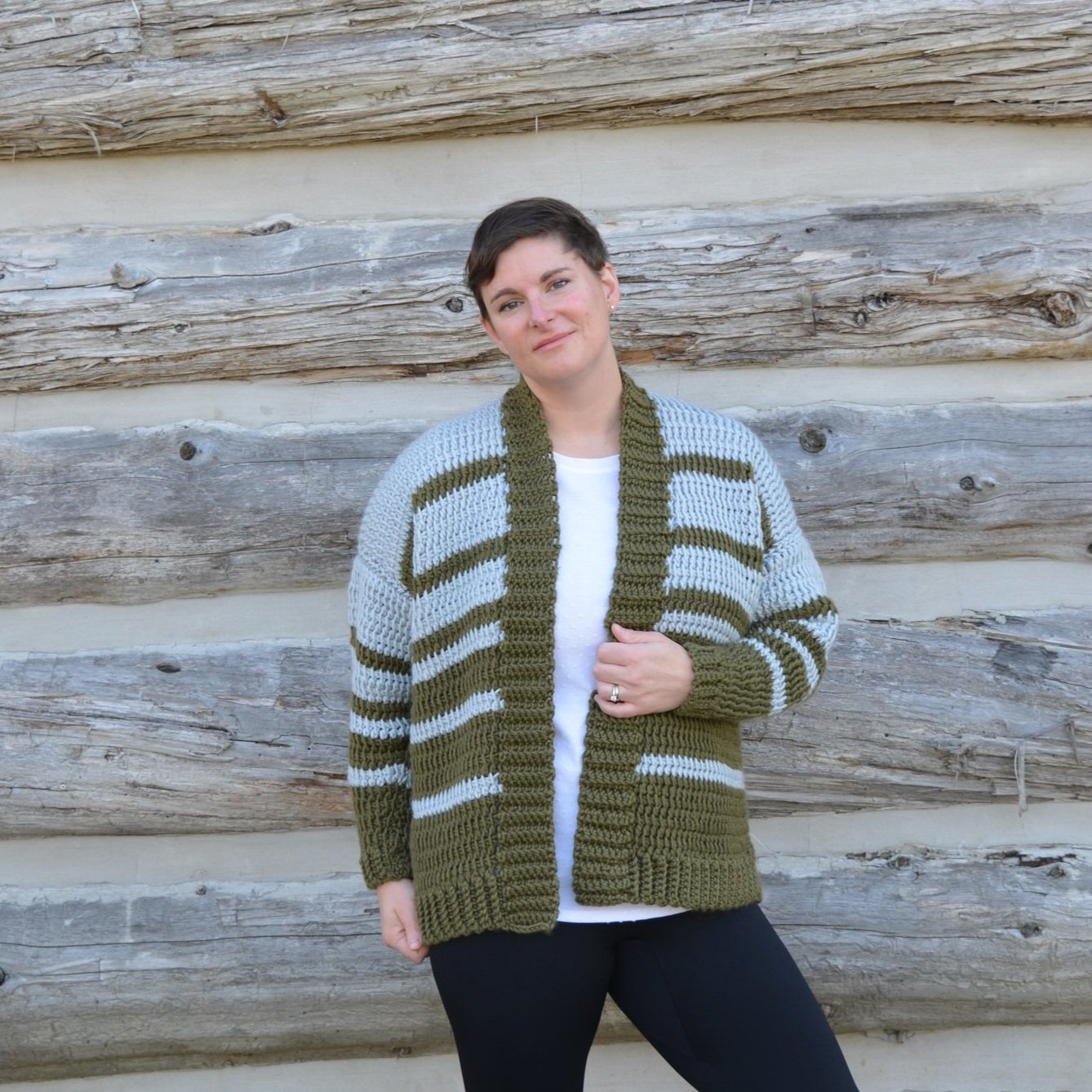Parallelogram Dishcloth
/This post may contain affiliate links, meaning that if you click through and make a purchase, I earn a small commission at no extra cost to you. This helps support my business and makes it possible for me to bring you free content.
Finally… It’s been a little longer than I had planned, but the newest pattern is here! Say hello to the Parallelogram Dishcloth, so named because of the way the fabric pulls heavily to the one side.
If you’re not familiar with my Stitch Exploration Series, here are the details: Each month, I post a new FREE dishcloth pattern that uses an interesting technique, skill or stitch. This is the first pattern in the series that uses Tunisian crochet - check out the others (that use traditional crochet) HERE.
This series is all about testing out new skills without the pressure of having to create a large project like a garment. When I’m designing, I find that I tend to choose familiar stitches, which can limit my creativity. I’ve chosen dishcloths because they’re small enough to finish up quickly, but large enough to get a general idea of the fabric the stitch pattern will create!
For this series, I’ve chosen a beautiful, durable cotton yarn, Dishie from WeCrochet. It comes in lots of fun colours (30 solids in total, plus there are also Dishie Twist and Dishie Multi!), and it is really nice to work with. It’s also really durable, making it great for dishcloths! In my experience so far, this yarn really holds up well during tough scrubbing.
Check out some of the previous patterns in the series - the Keyhole Dishcloth (cream) is probably my favourite so far, and the Coffee Bean Dishcloth is a fan favourite, with almost 200 likes and tons of projects on Ravelry!
If this is your first ever Tunisian crochet project, first of all, I am honoured! Second, I highly recommend that you check out a few tutorials first. This pattern is written with the assumption that you are comfortable with the basic stitches and can identify the different parts of the stitch (you’ll know what I mean once you get the hang of it!). My dear friend Toni of TL Yarn Crafts has an excellent beginner video - check it out HERE.
Once you’ve worked a few practice rows and feel comfortable, dive into the pattern below, and let your obsession with Tunisian crochet begin!
Now, let’s talk about this lean… you might be asking, can’t you block that out? And the short answer is… maybe.
For all of my dishcloth patterns, I use a 100% cotton yarn. This makes them very durable, and gives them a really sturdy structure. Because of that sturdiness, cotton isn’t as easily blocked to correct something like the lean that Tunisian crochet can sometimes create. Animal fibres such as wool, and some synthetics such as acrylics can are more easily manipulated, so it is much easier to block them and correct for slight inconsistencies in your measurements.
The second reason for such a dramatic lean is the stitch I used. It creates such a unique texture, but I promise, it’s super easy! If you can work the Tunisian Simple Stitch (Tss), you can work this one - because it is simply Tss through the back loop!
So… if you try this stitch with a different fibre, it may block out more evenly. If you do try it, be sure to let me know!
Materials
Hook - 7mm Tunisian crochet hook, or size needed to meet gauge (plus a short cable and stopper)
Yarn - WeCrochet Dishie, worsted (4) weight 100% cotton, 190 yds (174m)/100g (3.5oz) per skein.
Sample uses approx. 65 yds of the colour Creme Brulee.
Notions - scissors, tape measure, yarn needle.
Terminology/Abbreviations
This pattern uses standard US terms as detailed by the Craft Yarn Council:
Ch - chain
Lts - last Tunisian stitch (insert hook under both vertical loops of the last stitch of each row)
RetP - Return Pass (ch 1, *yarn over and pull through 2 loops, repeat from * until 1 loop remains on hook)
Tps - Tunisian purl stitch - VIDEO TUTORIAL
TssTBL - Tunisian simple stitch through the back loop - VIDEO TUTORIAL
Sl st - slip stitch
St(s) - stitch(es)
Sizing
Gauge - 4 sts x 5 rows = 1” / 2.5cm in TssTBL
Finished measurements - approx. 8.5 x 8.5”/22 x 22 cm, measured along both edges
TIP: this stitch creates quite a tight fabric. If you are usually a tighter crocheter, don’t be afraid to size up your hook!
See the Variations section below for instructions on how to change the size.
Notes
The first loop on your hook to start each row counts as a stitch in the overall stitch count, but it is not included in the instructions.
Gauge is not critical for this project, however, if yardage is a concern, you should aim to meet it as closely as possible. No one will judge an extra half inch on your dishcloth!
Generally, I do not block cotton washcloths, because they’re just going to get wet anyway. If you find that your stitches are uneven, or if you just want to straighten up the edges, blocking is a great way to fix these things (keeping in mind our discussion on blocking above)
Pattern Instructions
Row 1: Ch 28 and turn. Starting in the second st from hook, pull up a loop in the back bumps of each ch st, and complete a RetP. < 28 sts >
Row 2: *Tps across until 1 st remains. Lts, RetP.
Row 3: TssTBL across until 1 st remains. Lts, RetP.
Rows 4-8: Repeat Row 3.
Rows 9-29: Repeat Rows 2-8 three more times.
Row 30: Repeat Row 2.
Bind off in sl st and weave in ends.
Variations
This pattern can be easily adjusted to create a larger or smaller dishcloth.
To change the width of your dishcloth, simply change the number of chain stitches in Row 1. This pattern works with any number of starting stitches.
To make a taller or shorter dishcloth, you have two options. You can either work more or fewer repeats of Row 3 between Tps rows, or you can work more or fewer repeats of Rows 2-8.
Keep in mind that any alterations to the stitch or row counts will adjust the yardage required.
Save this pattern to your Ravelry queue, or add a project to the pattern page!
Congratulations on finishing your Parallelogram Dishcloth! This pattern has been a great reminder that even when things don’t work out as we expect, they can still be useful and beautiful. It’s also an example of embracing and working with the natural characteristics of the combination of yarn and stitch - once I stopped fighting with the shape, it really grew on me!
I’m having a lot of fun exploring these new-to-me techniques, and I hope you are too! I’d love to see your dishcloths (in finished or WIP form!), or how you’re using the things you’re learning here in your own designs. Share your dishcloth on Instagram using the hashtags #ParallelogramDishcloth and #StitchExplorationSeries, and tag me, @capital.crochet!
You may sell finished items made from this pattern, but please credit me as the designer by linking back to this blog post.
Thank you so much for your support! If you’d like to be the first to know about new patterns in this series and other blog posts, make sure to subscribe to my newsletter below.
If you’re loving the Tunisian crochet addition to the Stitch Exploration series, why not check out some of my Tunisian patterns?
The Thimble Beanie is a quick and easy pattern that uses bulky yarn - perfect for market makes!
The Stashdown Pillow is an excellent way to use up your scraps and adds a pop of colour to a couch or bedroom.
The Lisse Throw Blanket is a meditative make that brings warmth and comfort to your decor (also available as a kit via Lion Brand Yarn!).
If you’re ready to take on a garment pattern, check out the Flipside Cardigan!


